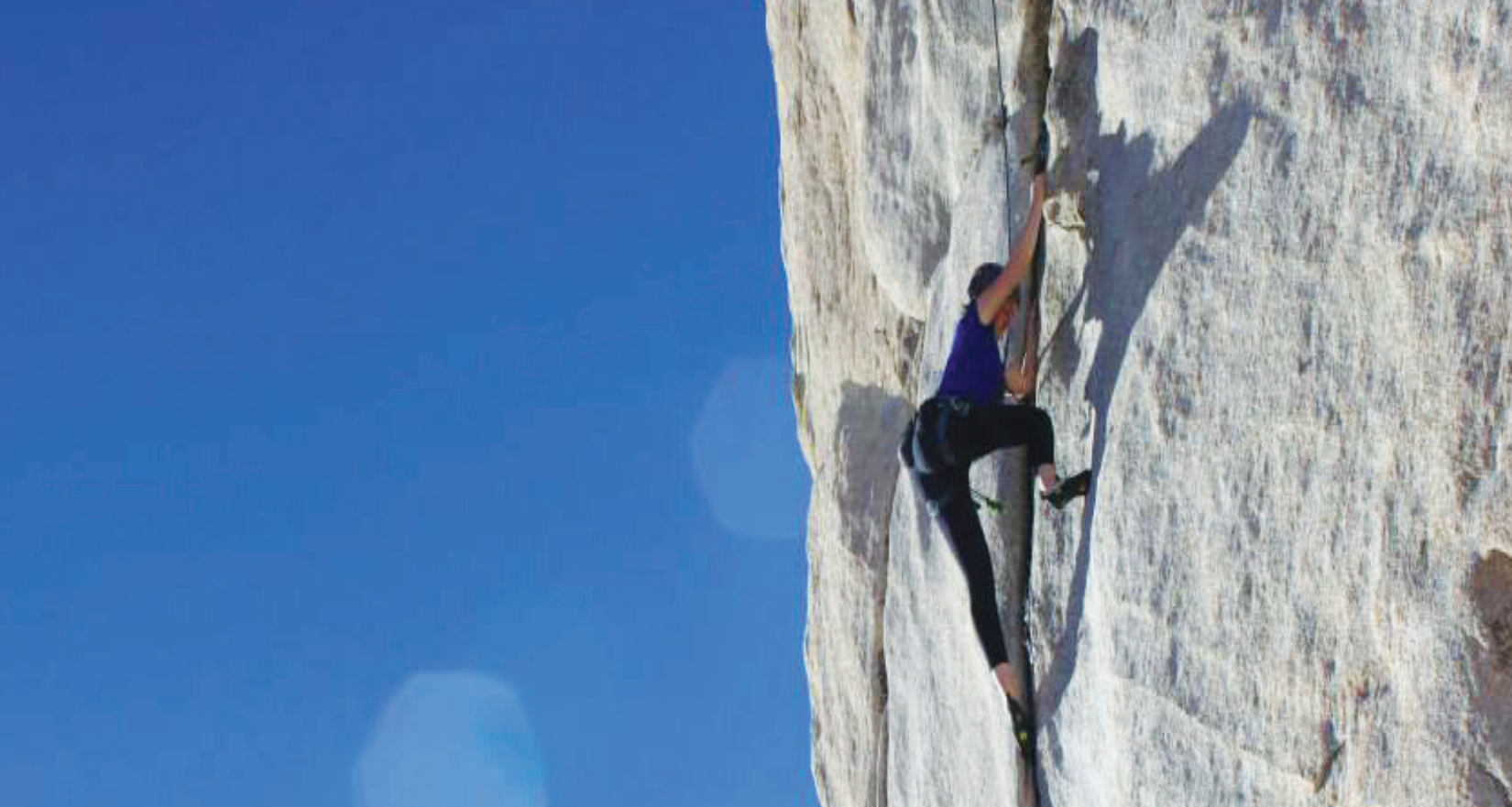Men and women are biologically different creatures. We look different naked-that much I’ve known since Jack Howzit (name very slightly changed) stripped down on the soccer field in rec soccer because he was tired, and angry, and those two orange slices at halftime just hadn’t quenched his primal need to disrobe himself. It wasn’t until my body began to mature though, that I begrudgingly conceded that it simply took me longer to develop muscles and reach different levels of physical fitness than my boy friends.
Are female bodies any less awesome as a consequence? Not in the slightest. As women venture into the outdoors, whether you grew up bagging peaks or hadn’t had the chance to get a big ol’ whiff of the great outdoors until you stumbled out, carsick, rambling up to St. Lawrence for the first time through the winding Adirondacks–we need to embrace our bodies and our minds.
I asked Klare Nevins if I could interview her because, for one, she is a strong woman of the Outing Club, a minority of the cornerstone theme house. And secondly, because she’s tremendous. I knew that she would be wildly intelligent and kind enough to warp my inarticulate questions into a compelling and well-composed dialogue. As we talked, I felt my own exhilaration about the burgeoning role of women in the outdoors swell, seeping down my legs. Really, I wanted to get on a mountain.
Nevins and I talked about societal delineation of the physical capability of the human body, and how that diverges to create different perceptions of what males and females are capable of, and further, what they will want to do. In fact, many studies have illustrated that we understand our interactions with nature differently based on our genders. However, these acuities can be detrimental to motivation to explore the outdoors, as women tend to underestimate the ability of their bodies and their minds to physically surmount obstacles.
So how do we overcome these mental obstacles? After that, the mountains are like a piece of dirt cake. We must learn to trust our bodies. By cultivating a more sensitive connection between our mental and physical selves, we can become more mindful of the truly incredible feats our collective whole is capable of accomplishing. And while it is empowering to try to understand your personal physical boundaries in some key solo missions, exploring the outdoors with your fellow women can be liberating as well.
By supporting one another, we can play safely and consciously, urging each other to push our physical boundaries, and to laugh at and acknowledge our limits. The extension of this attitude into our day-to-day life can allow us to be more cognizant of our resilience and strength. Wilderness can scrub the wreckage of a broken or confused life. The natural world may expose us now and then to harsh conditions or seemingly insuperable obstacles, but it also offers beauty, a backdrop against which people reacquaint themselves with their mental self and values.
It’s important to note that not every outdoor excursion needs to be a trek, bundled up in an #epic worthy label. Besides, we all know that the Instagram photo we see is a fleeting moment of joy, framed by many moments when you’re trying to defy gravity and you feel like you can’t do it, and your hair is basically glue-sticked to your forehead. By normalizing the myriad of experiences that we can have in the outdoors, we can enjoy nature and the outdoors without any predisposed expectations of how fast we should be going, what should or shouldn’t be wiggling in our spandex, and how our hair looks like a small mammal’s nest. As Cheryl Strayed said, “How wild it was, to let it be.



